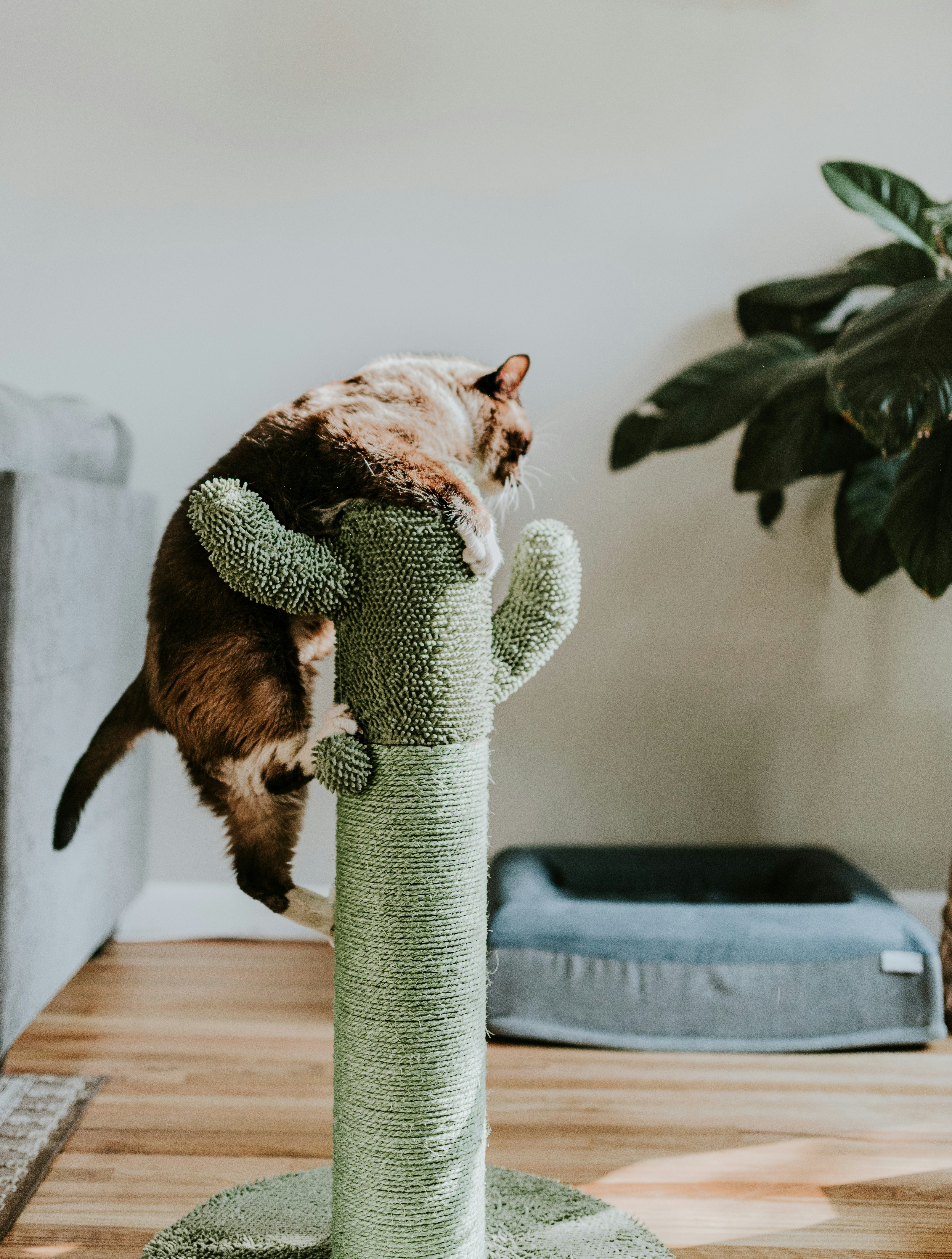
Understanding Your Cat’s Scratching Instincts
Scratching is an instinctive behavior that plays a vital role in a cat’s overall health and well-being. This natural activity serves multiple purposes that extend beyond mere playfulness or boredom. One of the primary reasons cats scratch is to mark their territory. Cats possess scent glands located in their paws, and when they scratch surfaces, they deposit their scent as a form of communication to other cats. This territorial marking allows them to assert their presence and establish a sense of ownership over their environment.
Additionally, scratching is essential for maintaining the health of a cat’s claws. As cats grow and age, their claws become dull and may accumulate layers of dead material. Scratching helps to remove this outer layer, keeping the claws sharp and functional. This is crucial not only for their daily activities but also for their ability to defend themselves if necessary. Without an appropriate surface to scratch, a cat’s claws may become overgrown or unhealthy, leading to discomfort and potential injury.
Moreover, scratching provides an opportunity for stretching and exercising. Cats are inherently flexible creatures, and the act of scratching allows them to stretch their back and shoulder muscles effectively. This physical activity is important for muscle tone and overall fitness, promoting a healthier lifestyle. When cat owners understand these fundamental instincts, they can better appreciate the necessity of providing a dedicated scratching station within their homes.
A well-designed scratching area serves to accommodate these natural behaviors, ensuring that the cat’s need for territory marking, claw maintenance, and muscle stretching is satisfied. In turn, this reduces the likelihood of unwanted scratching behaviors on furniture or other household items. Ultimately, creating a suitable scratching station reflects an owner’s commitment to their feline companion’s well-being and happiness.
Choosing the Right Materials for Your Scratching Station
When creating a cat scratching station, selecting the appropriate materials is crucial to meet the innate scratching needs of your feline companion. Understanding the various options available, such as sisal, cardboard, and carpet, will help in making an informed decision that balances durability, texture, and your cat’s preferences.
Sisal is a natural fiber derived from the leaves of the agave plant. It is often regarded as one of the best materials for cat scratching posts. The coarse texture of sisal effectively mimics tree bark, offering cats a satisfying surface to claw. Additionally, sisal is known for its durability, as it can withstand vigorous scratching sessions without fraying quickly. However, it is essential to inspect sisal posts periodically, as they may require replacement after prolonged use.
Cardboard, on the other hand, presents a more economical option for cat scratching stations. Cats are often drawn to the texture of cardboard due to its ability to provide both scratching and satisfying tearing experiences. Furthermore, many cats enjoy the fun of shredding cardboard, making this material an entertaining choice. While cardboard is not as long-lasting as sisal, it is lightweight and easily replaced, allowing for frequent updates to your cat’s environment.
Carpet is another popular material used for scratching surfaces, as it provides a soft and inviting feel for cats. The disadvantages of carpet include its tendency to wear down and fray over time, especially with frequent use. Additionally, some cats may not recognize carpet as a suitable scratching surface since it does not closely resemble their natural scratching habitats. However, if a cat is accustomed to carpet, it might serve as an acceptable choice.
Ultimately, the ideal material for your cat scratching station should align with your cat’s scratching habits and preferences. By understanding the pros and cons of each option, you can create a scratching station that not only fulfills their natural instinct to scratch but also enhances your home with a functional and engaging feature.
Optimal Positioning Techniques for Scratching Stations
When establishing a cat scratching station, careful consideration of its positioning within the home is essential to maximize its usage. One of the primary factors to take into account is visibility. Cats are naturally curious creatures, and their scratching behavior is often linked to their need for marking territory and maintenance of their claws. Place scratching posts or pads in areas where your cat frequently roams or rests. This promotes the habit of using the scratching station and discourages unwanted scratching of furniture or walls.
Accessibility is another critical element. Scratching stations should be situated so that they are easily approachable. Cats might shy away from stationary objects that appear too daunting or are placed in difficult-to-reach spots. Positioning the station near their favorite lounging spots or close to play areas encourages frequent interactions. Additionally, ensure that the scratching station is not obstructed by other objects, allowing for a stress-free experience as your cat engages with it.
Proximity to relaxation zones is also a significant factor to consider. Cats tend to scratch after they stretch or wake up from naps. By placing scratching stations near beds, perches, or sunny areas where cats like to lie down, you increase the chances of your cat utilizing the scratching post. Observe the areas your cat frequents; take note of their routines, such as where they like to nap or where they engage in playful behavior. Proper placement aligned with these insights will enhance the scratching station’s appeal and usefulness.
Observing your cat’s behaviors will ultimately guide you in their optimal scratching station positioning. By prioritizing visibility, accessibility, and the proximity of relaxation areas, you can create a well-placed scratching environment that caters to their instincts, thereby ensuring that your furniture remains safe from unintended damage.
Training Your Cat to Use the Scratching Station Effectively
Training a cat to use a scratching station instead of furniture requires a combination of patience, consistency, and positive reinforcement. Cats have an innate instinct to scratch as it helps them keep their claws healthy, mark territory, and stretch their muscles. To effectively redirect this behavior to the designated scratching station, it is crucial to create a positive association in the cat’s mind.
One of the most effective strategies is to use treats and positive reinforcement. When you first introduce the scratching station, place it in an area where your cat frequently scratches. Whenever you observe your cat using the scratching post or pad, immediately reward them with a treat or verbal praise. This reinforces the desired behavior, making it more likely that the cat will return to the scratching station in the future. Repeat this process consistently to establish a habit.
In addition to positive reinforcement, it may be beneficial to deter your cat from scratching furniture temporarily. To do this, cover the furniture with items such as double-sided tape, aluminum foil, or slipcovers specifically designed to discourage scratching. The uncomfortable texture will discourage cats from using that surface, thus prompting them to seek out their new scratching station instead.
Furthermore, consider offering a variety of scratching materials and designs to discover which ones your cat prefers. Some cats enjoy horizontal surfaces, while others may prefer vertical posts. Experimenting with different styles can help identify the most appealing options for your feline companion.
Behavioral strategies, such as redirecting your cat’s energy, can also facilitate the transition. Engage your cat in play sessions using interactive toys to burn off excess energy. After an invigorating play session, guide your cat to the scratching station and encourage them to scratch. Over time, persistence and encouragement will enhance your cat’s inclination to use the designated scratching area, benefitting both animal and owner.


